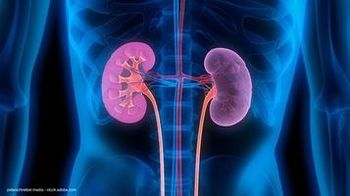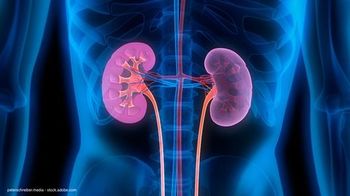
Sacral stimulation for IC fails the test of time
Atlanta-At a tertiary referral center in the Netherlands, long-term results of sacral neuromodulation for interstitial cystitis were disappointing, despite initial success. The study, presented here at the AUA annual meeting, adds to similar results presented last year by researchers at the Cleveland Clinic and, for some IC specialists, confirms their own experience.
Atlanta-At a tertiary referral center in the Netherlands, long-term results of sacral neuromodulation for interstitial cystitis were disappointing, despite initial success. The study, presented here at the AUA annual meeting, adds to similar results presented last year by researchers at the Cleveland Clinic and, for some IC specialists, confirms their own experience.
Jurjen Bade, MD, PhD, and his colleagues at the IC clinic at Bernhoven Hospital in Oss usually reserve sacral neuromodulation as third-line therapy after failure of other oral and intravesical treatments.
Since December 2001, the surgeons have had 41 patients (35 women and six men) undergo a trial of sacral neuromodulation with the InterStim device (Medtronic, Inc., Minneapolis) and proceeded to implantation with 21 patients. All patients met the National Institute of Diabetes and Digestive and Kidney Diseases research definition of IC.
Before implantation and during follow-up, patients rated their pain and urgency on 10-point analog scales, answered questionnaires for the O'Leary-Sant IC Symptom Index, and kept voiding diaries.
At 3 months, 18 patients reported subjective improvement of 50% or more. Pain scores fell from a mean of 7 to 3.7; urgency scores, from 8 to 4.6; symptom scores, from 15.2 to 8.3; and frequency, from 23 to 13 voiding episodes per day. Average voided volume rose from 101 mL to 144 mL and maximum bladder volume, from 211 mL to 255 mL.
However, at the latest follow-up (average, 25 months, with 18 of the patients exceeding 1 year), only eight of 18 (45%) reported symptom improvement of 50% or better. After a mean of 10 months, six patients had de-activated the device, and three underwent urinary diversion with Indiana pouch procedures. Complications of sacral neuromodulation procedures included one surgical repositioning and one explantation because of infection.
Untenable success
Criticism of previous negative results included questions about technique: whether leads were placed correctly and whether test stimulation was sufficient. Dr. Bade conceded that results have improved somewhat since he and his colleagues started using the tined lead and have also applied the technique more liberally to patients with less-severe disease.
"But still," he told Urology Times, "a number of them are not satisfied. While they had a very positive test result, we cannot keep the initial test result with the final modulator, and that is a bit disappointing."
Even the patients who were the worst off (some who had laser coagulation of Hunner's ulcers) did well with neuromodulation at first and experienced relief of symptoms for some months, then stimulation no longer worked, Dr. Bade said.
He pointed out that he checked for lead migration, tried bilateral stimulation, and offered patients another opportunity to try the therapy.
"Once it doesn't work, it really doesn't work," he explained. "That's our experience."
Referrals for failure of neuromodulation are something he's starting to see in his practice, commented J. Curtis Nickel, MD, professor of urology at Queen's University, Kingston, ON, Canada.
"About 60% of the ones implanted in this reported series have had failures," he said. "That's our impression as well. We should tell our patients that effects tend to decrease in the long term."
Kenneth Peters, MD, of William Beaumont Hospital, Royal Oak, MI, who co-chaired the IC poster session, pointed out that end-stage patients don't do well in the long run with sacral neuromodulation, and that patient selection is important.
Although some IC researchers have speculated that nervous system adaptation may be the reason results diminish with time, Dr. Bade had no explanation.
"I think it's the mystery of the disease IC," he said.
Newsletter
Stay current with the latest urology news and practice-changing insights — sign up now for the essential updates every urologist needs.

















